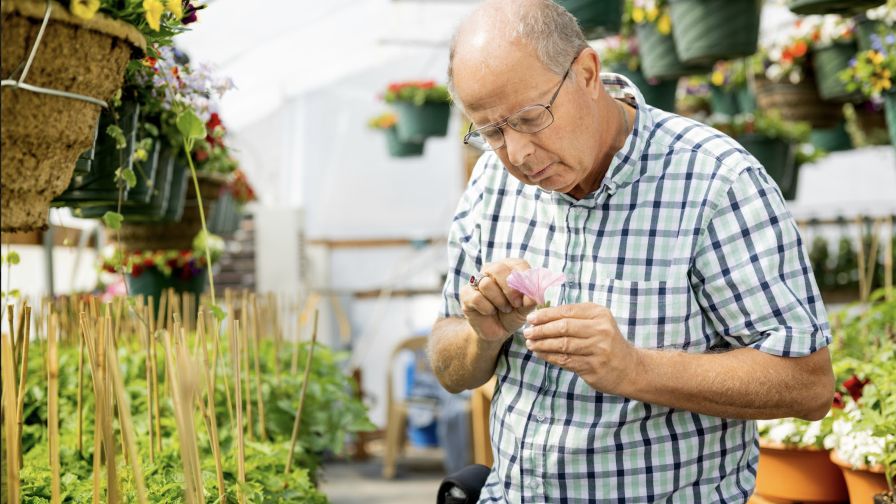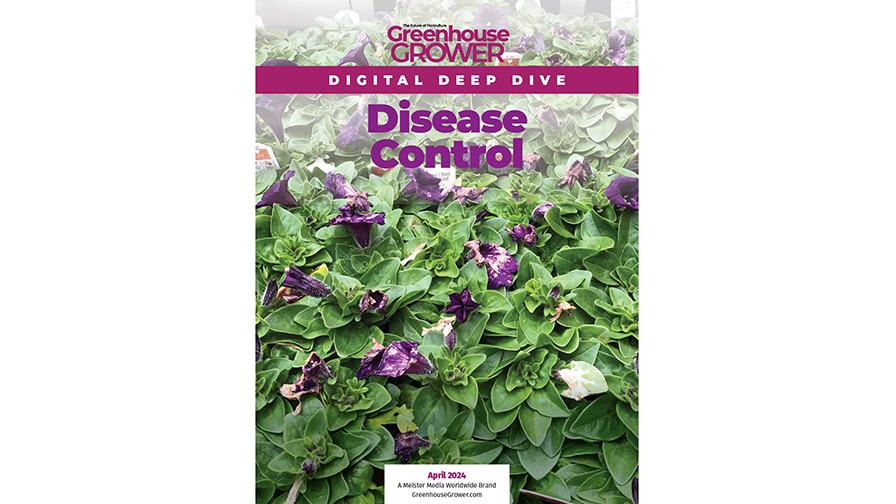Why Biosolutions Are Gaining Market Share Among Greenhouse Growers

By keeping a close eye on their crops, growers can identify pests and diseases early and order biologicals in plenty of time. Photo: Certis Biologicals
Biosolutions are becoming more popular in greenhouses throughout the country. They do not replace traditional methods of pest control, but growers are finding many benefits to them. Biosolutions offer new, effective practices to control pests and diseases and offer many environmental benefits.
Bill Foster, CEO of BioWorks, says more growers should learn how to add biosolutions to their integrated pest management (IPM) programs.
“From our perspective, there are opportunities to help growers gain confidence in using available biological products to move away from other control options that are more difficult to use due to application or increased regulatory restrictions,” Foster says. “This means more flexibility and additional options to avoid supply chain and cost challenges.”
New Research on Biosolutions
Rodrigo Bermudez, Director of the West and LATAM regions for Locus AG, says not all biological strains perform the same. Growers should look for biological products that contain strains specifically chosen for their efficacy on specific crops or in specific growing regions for optimal performance.
“Not all biologicals are created equal,” he says. “To ensure growers are selecting the best product, they should confirm the biological product has verified data and/or third-party trials that demonstrate the biological product’s performance on their crop and/or region. One of the para-meters we look at for greenhouses is a lower grower input budget or outlay for the same or more commercially accepted harvest increase.”
Dr. Michael Brownbridge, Biological Program Manager, Disease Control Management for BioWorks, says a new product called BotryStop WP launched in January 2023. This biofungicide allows growers to bring a new mode of action (MOA) into their botrytis management programs.
“Re-formulated so it can be stored at room temperature and is easier to prepare and apply, this biofungicide will suppress Botrytis on indoor and outdoor crops and can be used in organic and conventional production,” Brownbridge says. “The new formulation label has also been expanded to include bacterial leaf spot (Xanthomonas sp.), and wording allows use on a broader range of crops.”
Cody Seals, U.S. Product Manager for Beneficial Insectary, says researchers are diving deeper into biological-based plant protection and the roles those organisms can play in reducing synthetic pesticide usage.
“Popular biopesticides such as Trichoderma asperellum, Beauveria bassiana, or Metarhizium anisopliae are being utilized to help control plant pests such as fungal diseases, aphids, and mealybugs,” he says. “Further research is beginning to show that these biological pesticides provide more than just protection and may also play a part in producing better crops by interacting with the plants, promoting growth and overall healthier plants.”
Dr. Yossi Kofman, Co-Founder and CEO of Groundwork BioAg, says microbials continue to prove themselves as an important engine of ecosystem function for greenhouses.
“The more we understand the symbioses between mycorrhizal fungi and Mycorrhiza Helper Bacteria (MHB), the more we can deliver specific benefits to indoor ag,” he says. “Currently, Groundwork BioAg is collaborating on new research to validate the use of different microbial combinations to achieve more powerful ecosystem-wide benefits.”
Groundwork BioAg is also exploring the role of mycorrhizae in soil carbon sequestration, particularly how mycorrhizae contribute to carbon permanence by locking carbon within the soil. Kofman says the benefits of carbon sequestration will become accessible for both row crop and greenhouse operations.
How Growers Can Prepare
Jim Black, Business Director at Certis Biologicals, says growers should plan ahead as much as possible to ensure they have the products they need. While suppliers are seeing promising relief in logistics, he says there are still challenges in sourcing the natural components that make up the raw materials of their products and products Certis distributes for its partner manufacturers.
“At Certis Biologicals, we advise that proper and diligent scouting in controlled-environment agriculture is more critical than ever now,” Black says. “Growers should keep a close eye on their crops so that they can identify pest and disease issues early. This practice will allow them to source biosolutions early for maximum lead times.”
Kelly Liberator, Director of Technical Service at AgBiome, says some diseases may become resistant to fungicides.
“Greenhouse growers should prepare for continued fungicide resistance development and the move toward more ecologically sustainable solutions,” she says. “The industry needs to keep all of the tools available to control damaging diseases and pests, which will require diversifying the types of products that are used.”
Alex Cochran, Chief Technology Officer for DPH Biologicals, says growers should be prepared for continued high input prices as the supply chain has yet to recover from the multiple shocks of 2022. New product advancements may be expensive.
“However, growers should also start seeing price parity amongst established product sectors as the marketplace matures and companies scale their production levels,” Cochran says. “In 2022, DPH scaled up production of our signature SP-1 formula to meet demands from the turf, ornamental, greenhouse, and row crop sectors and are well-poised to meet the needs of 2023.”
Biocontrols continue to be a growing sector of the horticulture industry. Growers have found many benefits with biocontrols, such as better pest control, a less volatile supply chain, and an environmentally friendly alternative to some pesticides. Researchers are diving deeper into this field to gather data and offer solutions to growers.










